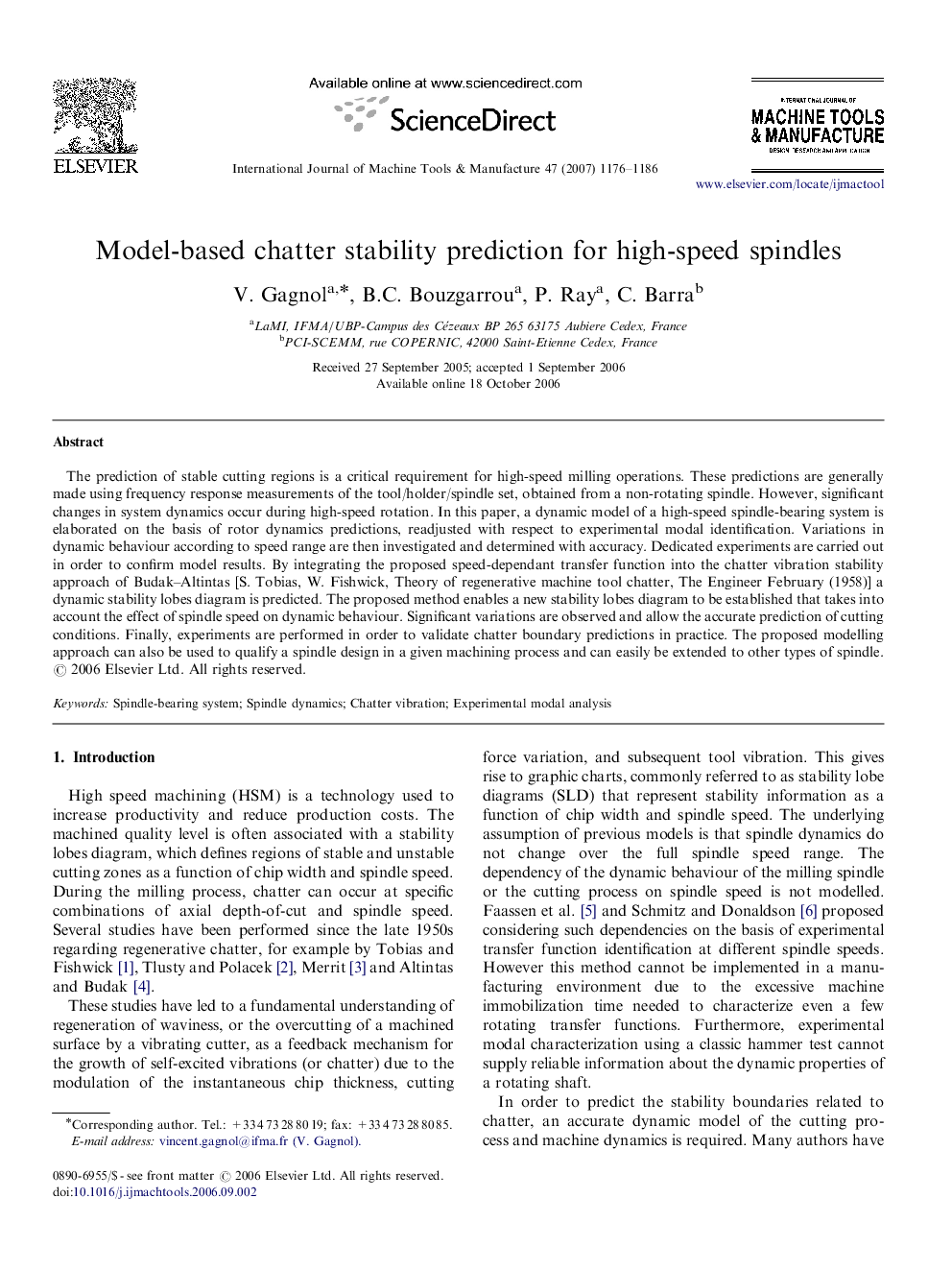| Article ID | Journal | Published Year | Pages | File Type |
|---|---|---|---|---|
| 782059 | International Journal of Machine Tools and Manufacture | 2007 | 11 Pages |
The prediction of stable cutting regions is a critical requirement for high-speed milling operations. These predictions are generally made using frequency response measurements of the tool/holder/spindle set, obtained from a non-rotating spindle. However, significant changes in system dynamics occur during high-speed rotation. In this paper, a dynamic model of a high-speed spindle-bearing system is elaborated on the basis of rotor dynamics predictions, readjusted with respect to experimental modal identification. Variations in dynamic behaviour according to speed range are then investigated and determined with accuracy. Dedicated experiments are carried out in order to confirm model results. By integrating the proposed speed-dependant transfer function into the chatter vibration stability approach of Budak–Altintas [S. Tobias, W. Fishwick, Theory of regenerative machine tool chatter, The Engineer February (1958)] a dynamic stability lobes diagram is predicted. The proposed method enables a new stability lobes diagram to be established that takes into account the effect of spindle speed on dynamic behaviour. Significant variations are observed and allow the accurate prediction of cutting conditions. Finally, experiments are performed in order to validate chatter boundary predictions in practice. The proposed modelling approach can also be used to qualify a spindle design in a given machining process and can easily be extended to other types of spindle.
